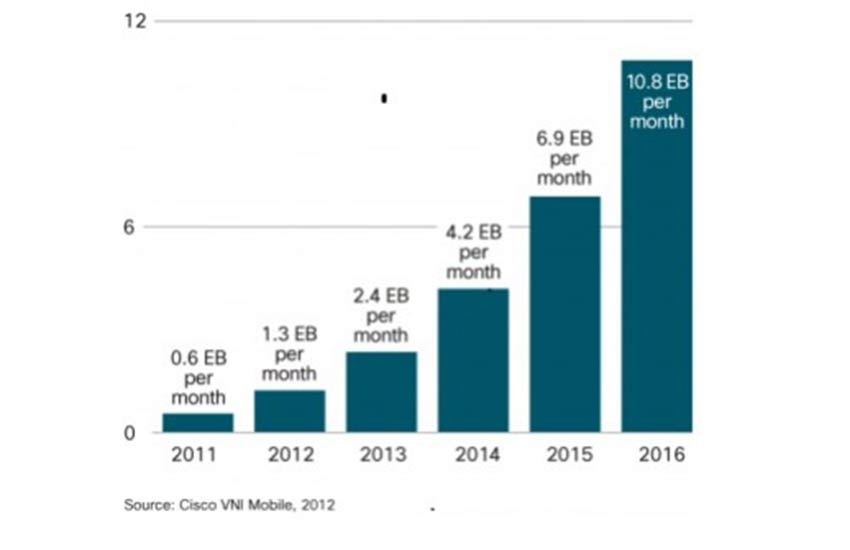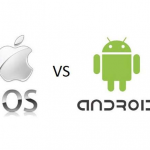Comparative Analysis of Native Apps vs Web Apps for Mobile Commerce

In a world where consumers demand instant gratification, mobile commerce has become the go-to option for shopping. Did you know that the global m-commerce market was valued at USD 267.84 billion in 2021 and is expected to grow at a CAGR of 27.0% during the forecast by 2030, it’s no surprise that businesses are looking for ways to provide seamless and engaging experiences for their customers. According to a study by Criteo, “mobile apps drive 3 times more conversions than mobile sites.” This statistic highlights the importance of mobile apps in driving sales and revenue for businesses. And here comes the popular Native App vs Web App.
However, businesses face the dilemma of whether to invest in developing native apps or web apps for their mobile commerce platform. While both offer unique benefits, the decision ultimately comes down to what will provide the best user experience and drive more sales.
According to a study by Compuware, “85% of mobile device users prefer mobile apps over mobile websites.” However, businesses must also consider the costs of developing and maintaining a native app versus a web app. In 2020, the average cost of developing a native app was estimated to be between $20,000 and $150,000 (Clutch), while the cost of developing a web app varies depending on the complexity of the platform.
With so much at stake, businesses must carefully weigh the benefits and drawbacks of both native apps and web apps. In this analysis, we will compare the two options in terms of user experience, development costs, maintenance, access, offline availability, performance, security, updates, and user reach, to help businesses make an informed decision about their mobile commerce platform.-
What are Native Apps?
Native apps are software applications specifically developed for a particular platform, such as Android or iOS, using programming languages and development tools supported by that platform. These apps are downloaded and installed on a user’s device and can access the device’s hardware features, including the camera, microphone, and GPS location. Native apps offer faster and more responsive user experiences, offline access, and can fully utilize the capabilities of the device’s hardware.
What are Web Apps?
Web apps are software applications that run on a web browser and are accessed over the internet, without the need for installation on a device. They are built using web technologies such as HTML, CSS, and JavaScript and can be accessed from any device with a web browser and an internet connection. Web apps are platform-independent, easier to deploy and maintain, and offer cross-platform compatibility.
Native Apps vs Web Apps: Differences to Consider
| Factor | Native Apps | Web Apps |
|---|---|---|
| User Experience | High-quality experience with better performance | Limited user experience with slower loading times |
| Development Costs | Higher development costs due to platform-specificity | Lower development costs due to cross-platform design |
| Maintenance | Higher maintenance costs | Lower maintenance costs |
| Access | Requires download and installation | Can be accessed directly through the mobile browser |
| Performance | Better performance due to optimized code | Slower performance due to browser limitations |
| Security | More secure due to platform-specific security measures | Less secure due to potential vulnerabilities in the browser |
| Updates | Require manual updates | Automatically updated through the server |
| User Reach | Limited reach to specific platform users | Wider reach to all mobile device users |
Let’s Dive In-Further
Native vs Web App User Experience
A seamless user experience is key to the success of any mobile commerce platform. Native apps have the upper hand over web apps as they can provide a more engaging and immersive user experience. The ability to use device-specific hardware features like camera, GPS, and push notifications makes native apps stand out. For instance, a fashion retailer can use the camera in their native app to allow users to virtually try on clothes, making the shopping experience more interactive and fun. Moreover, push notifications can be personalized and targeted to increase customer engagement.
However, web apps still hold their ground and can offer a good user experience. The accessibility of web apps makes them more attractive to businesses as they don’t require a download and can be accessed from any device with an internet connection. Nevertheless, web apps may lack some features that native apps have, and may not provide the same level of engagement to users.
Amazon Shopping and Poshmark are well-known examples of native and web apps that provide a great user experience for mobile commerce, respectively. Amazon Shopping offers features like barcode scanning and push notifications, while Poshmark’s mobile-optimized web app has a user-friendly interface and direct messaging between buyers and sellers.
Counting the Cost
When it comes to development costs, native apps can be more expensive than web apps. This is because native apps require separate development for each platform such as iOS and Android, which means that the app has to be developed twice, once for each platform. This can significantly increase development costs, especially for small businesses or startups that may not have the resources to develop for multiple platforms.
On the other hand, web apps can be developed using web technologies such as HTML, CSS, and JavaScript. This means that businesses can create a single web app that can run on multiple platforms, including desktop and mobile devices. This can be a more cost-effective option for businesses, especially those that are just starting out or have a limited budget.
Keeping it Running
Maintenance is an important aspect of mobile app development, as it ensures that the app continues to function properly and provides a good user experience. In terms of maintenance, web apps have an advantage over native apps because updates can be made directly to the server. This means that users can receive the latest version of the app without needing to download and install a new version.
In contrast, native mobile apps need updates for each platform, which can be time-consuming and complex. This means that businesses may need to invest more resources into maintaining and updating their native apps. Fortunately, companies can outsource to top-rated native mobile app development services providers like Finoit to expedite the process.
Breaking Barriers
Web apps have a distinct advantage over native apps when it comes to access. Unlike native apps, which require separate development for each platform, web apps can be accessed from any device with an internet connection and a web browser. This makes them a more widely available option for businesses looking to reach a broad audience without incurring the added cost of developing multiple native apps.
Moreover, web apps offer users a more convenient experience, as they do not need to download or update an app from an app store. Instead, they can simply access the app directly from their web browser, which is usually pre-installed on most devices. This hassle-free access can make webs apps more alluring choice for users who value convenience when using an app and also companies find web application development services cost-effective.
Deep Dive into Performance
Native apps are designed specifically for the platform they are developed on, which allows them to take full advantage of the device’s hardware and software capabilities. As a result, they can deliver faster and smoother performance compared to web apps.
Native apps can load quickly and are more responsive due to their ability to access the device’s resources directly. This can be particularly important for mobile commerce apps where customers expect fast and seamless performance. Web apps, on the other hand, rely on internet connectivity and web browser rendering, which can lead to slower loading times and less responsiveness.
Security
Security is a crucial factor in app development, and both native and web apps can be secure if developed with appropriate security measures in place. However, native apps are generally considered more secure than web apps as they can utilize platform-specific security features.
For example, iOS provides hardware-level encryption for user data, which can make it more difficult for hackers to access sensitive information. Similarly, Android provides built-in security features such as app sandboxing and permission controls. While web apps can also implement security measures such as encryption and authentication, they may be more vulnerable to attacks due to their dependence on the internet and the lack of platform-specific security features.
Updates
Native apps typically require manual updates for each platform, such as iOS and Android. This means that developers need to create separate updates for each platform and users have to manually download and install them. On the other hand, web apps can be updated directly on the server, making the process simpler and more efficient for developers.
However, native apps can also be set to automatically update, which can make the process easier for users. This means that users do not have to manually download and install updates and can receive the latest version of the app automatically. This can help ensure that users have the most up-to-date version of the app with the latest features and security updates.
User Reach
Web apps are accessible from any device with a web browser, which can help businesses reach a broader audience. This can be particularly advantageous for small businesses or startups that want to expand their user base without investing in separate native apps for each platform.
However, web apps may not be as visible as native apps since they are not listed on app stores, making it more challenging to attract new users. In contrast, native apps are listed on app stores, providing more visibility to potential users. This can help businesses build brand awareness and attract new customers more easily, particularly if their target audience primarily uses mobile devices.
For example Walmart has both native and web apps for its m-commerce platform. Its web app is accessible on any device with a web browser, while its native apps are available for download on the App Store and Google Play store. Walmart has a large user base and is one of the biggest e-commerce players in the world.
Native Apps vs Web Apps: Which is Best
Both native apps and web apps have their own strengths and weaknesses when it comes to mobile commerce. Native apps provide a more immersive and personalized user experience, while web apps are more easily accessible and can be updated in real-time. Native apps are faster, while web apps are more cost-effective to develop and maintain. Native apps are generally more secure, while web apps are more vulnerable to security threats.
Companies looking forward to making the right choice should know their customers and their users. What kind of mobile devices do they use? Are they using smartphones or regular mobile phones? Are they using iOS or Android? What kind of mobile app security do they need? Depending on the answer is the right approach to an effective mobile commerce strategy. This post on mobile app development strategies may also help you understand the factors you must consider.
Finoit Technologies, a full-service software development company in the US, is recognized for it’s services like mobile app development, web development for startups and SMBs. We have developed over 450 mobile apps, and have worked with over 200 customers in bringing their ideas to life. For questions/queries, you may write to us at info@finoit.com
Frequently Asked Questions
Can a web app provide a personalized experience like a native app?
Yes, a web app, too, can provide a personalized experience much like a native app. By combining multiple tools and technologies, web apps can deliver customized content, features, and user interfaces that match specific needs and preferences. Additionally, web apps can also take advantage of browser-based features such as notifications, offline caching, and location services and enhance user experience.
How do native apps and web apps differ in terms of access to device hardware features?
Native apps are built using platform-specific programming languages like Java or Swift, and they have direct access to the device’s hardware features. As against this, web apps are built using web technologies such as HTML, CSS, and JavaScript and are accessed through a web browser, and have limited access to hardware features due to browser sandboxing.
How do native apps and web apps differ in terms of development time and complexity?
Native apps are built for a specific OS while web apps are built considering that they should be compatible across platforms and devices. For web apps, you thus need to build a single version of an app so web apps can be built fast. In contrast, native apps take more time as compared to web apps.

